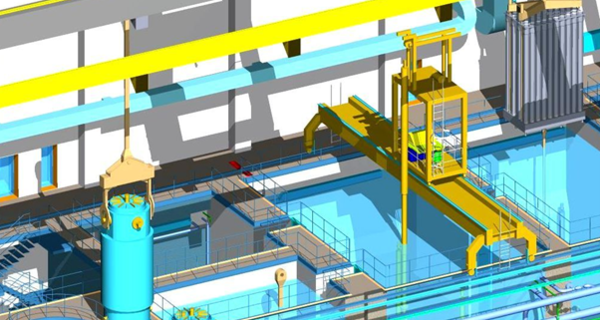The spent fuel interim storage design project for Hanhikivi-1 nuclear power plant was divided into two distinctly different phases: in the first phase, Fennovoima was supported in decision-making regarding optimal storage type, and in the second phase, the chosen storage concept was designed.
The first phase started in 2016. Based on framework and initial data given by Fennovoima, fuel cycle analysis was performed. This led to definition of the needed storage space and cooling capacity for both storage alternatives. And this, combined with analysis of safety requirements, enabled Fortum to build a preliminary system design and ultimately a preliminary 3D model for both the wet and the dry storage alternatives. Cost estimates were made for both storage methods, and the safety and feasibility of the concepts were also evaluated.
Based on the report, the wet pool storage was presented to Fennovoima as the final proposal. In autumn 2016, according to Fortum's proposal, Fennovoima ended up choosing the wet pool storage. Some of the significant selection criteria were related to consistency with the Finnish disposal process, compliance with the safety requirements and beneficial investment parameters.
The second phase was started after Fennovoima made its decision for a wet storage. The design of the wet storage was refined from conceptual design of the first phase.
The design included, among other things:
- Conceptual design (structural design, I&C, electrical) / basic design (process systems, building services, lay-out) of a wet pool storage
- Safety engineering documents with ADLAS®-method
- PSAR documents
- Topical reports, including safety analyses.
